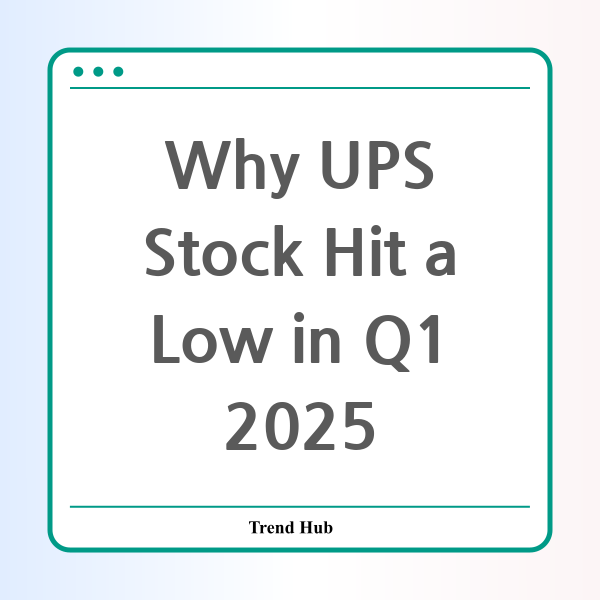* This website participates in the Amazon Affiliate Program and earns from qualifying purchases.

Have you been keeping an eye on UPS stock recently? If so, you may have noticed a significant downturn in the company’s shares. In the first quarter of 2025, UPS (NYSE: UPS) stock plummeted by 12.8%, marking a stark contrast to other sectors as the S&P 500 faced its worst quarter since 2022.
The main driver behind this decline can be traced back to disappointing earnings reports. Although the fourth-quarter earnings figures did not shock investors, the announcement that UPS intends to cut its delivery volume for Amazon by 50% by the latter half of 2026 raised several eyebrows. This move is significant, given that Amazon accounted for 11.8% of UPS' total revenue in 2024. Such a reduction not only alters the revenue landscape but also reflects the company’s shift towards focusing on higher-margin deliveries in the small and medium-sized enterprise (SMB) and healthcare markets.
Deliveries made for Amazon are often characterized as low-margin, and their removal will allow UPS to reallocate resources toward more profitable operations, aiming for a $1 billion cost reduction through this strategy. However, the transition will not be seamless. Investors are understandably concerned about UPS’s ability to meet its guidance and the broader impacts on operations.
Compounding these concerns is the current economic climate. The lingering effects of trade policies and tariffs have created an environment of uncertainty that affects not just UPS, but the entire logistics and delivery industry. Companies like FedEx have also felt the squeeze, reported reductions in revenue forecasts due to weakness in the industrial economy, causing UPS shares to fall in sympathy.
Looking ahead, UPS’s current free cash flow guidance of $5.7 billion is precariously close to its capital return plans, which include $5.5 billion for dividends and $1 billion for stock buybacks in 2025. Any dip in earnings could significantly jeopardize these plans, leading to even more volatility in stock prices. Moreover, as UPS attempts to reduce its reliance on Amazon while facing a potential slowdown in the small-package delivery market, the risks grow.
Analysts have been adjusting their stock price targets for UPS in light of these developments. Investment firms have collectively lowered estimates for UPS stock ahead of the earnings season. For instance, Barclays has downgraded its price target to $90 from $100, expressing skepticism about UPS’s ability to manage its profit margins amid declining volumes in the domestic package sector. Similarly, Susquehanna adjusted its target to $120 from $130, attributing this to decreased U.S. volumes.
Bank of America Securities has also lowered its price target, citing soft demand stemming from tariff uncertainties and adverse weather conditions, predicting an 8% decline in domestic volumes. With all these factors at play, UPS's forthcoming earnings report will be scrutinized closely by investors looking for signs of stability or further declines.
In conclusion, the current trend in UPS stock reflects a confluence of company-specific challenges and broader economic pressures. As UPS pivots its strategy, focusing on higher-margin deliveries while scaling back on Amazon volumes, the road ahead remains fraught with potential pitfalls. For investors, the coming months could be a crucial period to gauge whether UPS can adapt successfully or if its current trajectory will lead to further declines in stock performance.
* This website participates in the Amazon Affiliate Program and earns from qualifying purchases.